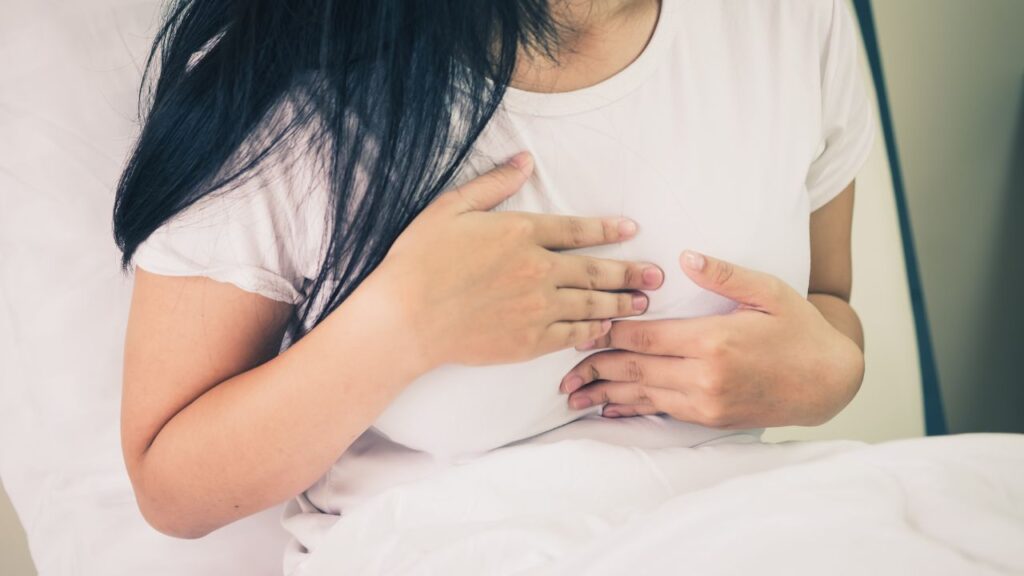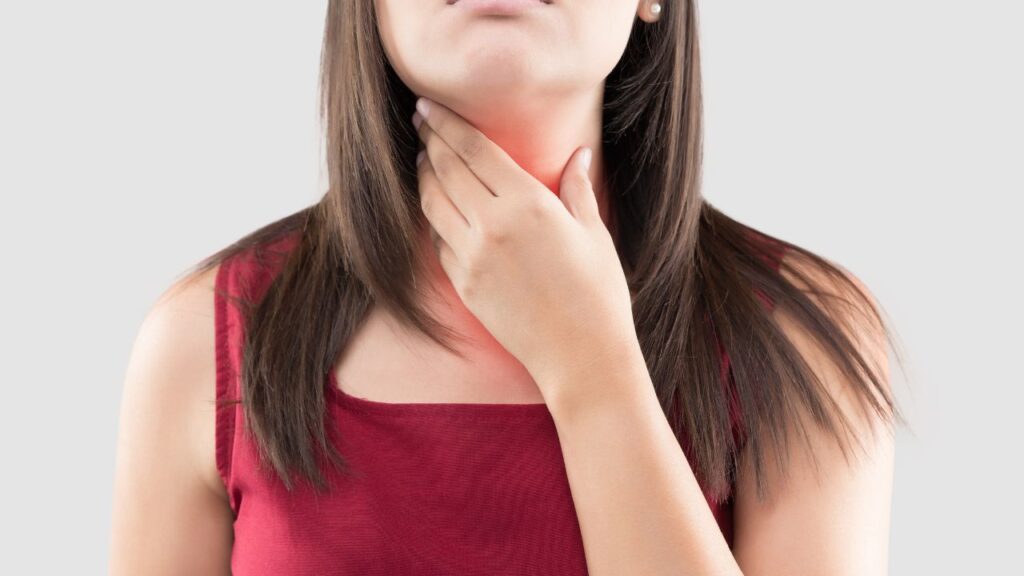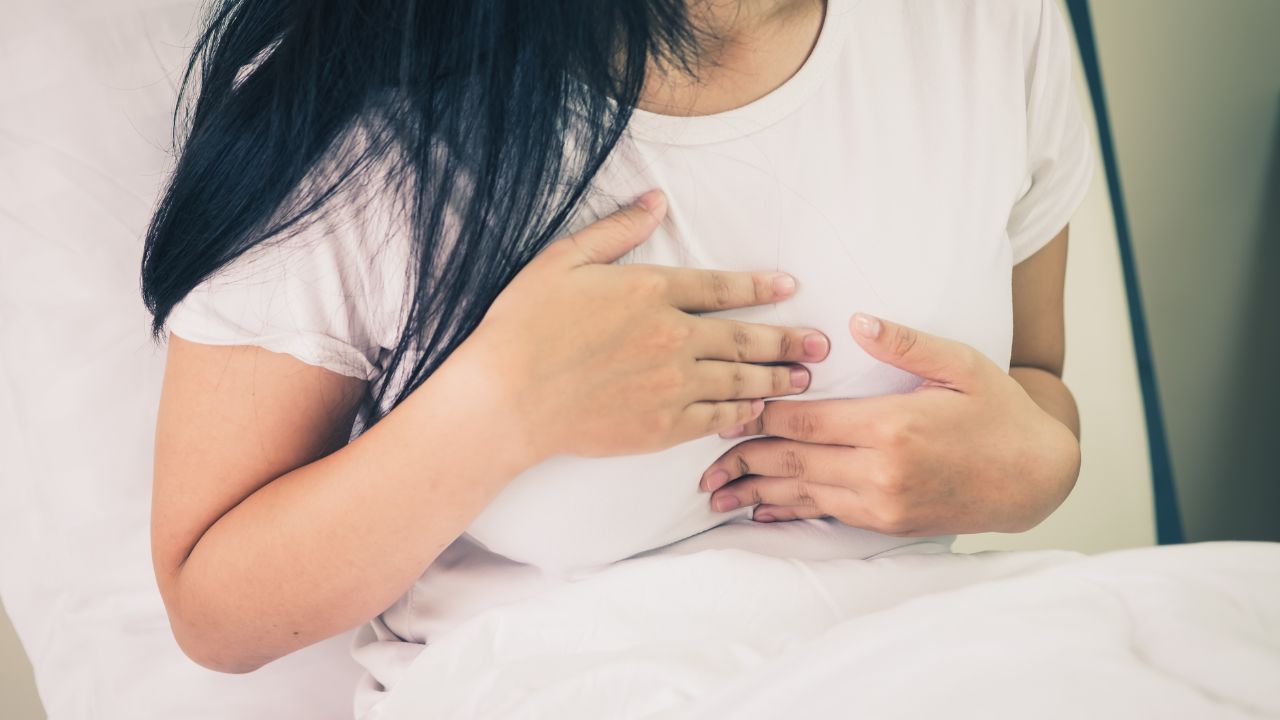Burning after dinner? Scratchy morning throat? You’re not alone—reflux touches millions. The good news: daily habits can move the needle fast. In this guide to acid reflux lifestyle changes, we’ll blend simple wins (like meal spacing and left-side sleep) with deeper fixes (posture, breathwork, weight management). I’ll keep it friendly and actionable. Short steps. Big relief. Let’s rebuild your routine—so meals feel normal again!
Curious whether an expert-led game plan can finally calm your GERD or LPR? Read our in-depth Reflux Online Summit review and see what’s inside before you decide.
🧭 Why Lifestyle Changes Matter for GERD & LPR
🔍 GERD vs. LPR—different symptoms, different strategies
- GERD (esophagus-focused): burning heartburn, chest discomfort, sour regurgitation, worse after large/fatty meals or lying down.
- LPR (throat/voice-focused): chronic throat clearing, cough, hoarseness, globus (lump-in-throat), post-nasal drip sensations—often without heartburn.
- Why it matters: GERD care prioritizes reducing acid exposure to the esophagus; LPR care protects the throat/voice box and often leans lower-acid plus stricter timing.
🧯 The pressure story (not just acid): intra-abdominal pressure & LES
- Gas, large portions, tight waistbands, central weight, constipation → raise intra-abdominal pressure (IAP).
- Higher IAP triggers transient LES relaxations (TLESRs) and pushes contents upward.
- Lifestyle changes that lower pressure (smaller meals, bloat control, loose clothing, regular bowels) can reduce reflux even when acid levels are normal.
⏱️💺😴😮💨 Habits that compound—timing, posture, sleep, stress
- Timing: finish dinner 3–4 hours before bed; avoid grazing to let the migrating motor complex clear the gut.
- Posture: stay upright 30–60 min after meals; avoid bending/twisting; “ribs over pelvis” cue at desk/sofa/car.
- Sleep: left-side sleeping + head-of-bed elevation (6–8″) to prevent night reflux; lighter evening meals.
- Stress: 2–5 minutes of diaphragmatic breathing pre-meal; mindful, slow eating to cut aerophagia (air swallowing).
- Synergy: stacking these habits lowers pressure, improves sphincter control, and protects sensitive throat tissues—especially crucial for LPR.
Start your healing journey with the Reflux Online Summit.
⏱️🍽️ Meal Timing & Eating Mechanics (Foundation Habits)

🌙 Finish dinner 3–4 hours before bed; skip late-night snacks
- Aim for a “last bite” 3–4 hrs before sleep (e.g., 7:30 pm if lights-out is 11:00 pm).
- If you truly need something, choose a tiny, low-fat option (e.g., chamomile tea, a few oat crackers, or half a banana).
- Avoid late alcohol, carbonation, chocolate, tomato/citrus, and heavy meals that slow emptying.
- Shift workers: anchor the same 3–4 hr pre-sleep window relative to your actual bedtime.
🥗 Smaller, evenly spaced meals; 80% full; chew thoroughly
- Structure: 3 modest meals + 1 light snack, spaced 3–5 hrs apart to prevent overfilling.
- Portion guide: ½ plate cooked veg, ¼ lean protein, ¼ gentle carbs; keep fats modest.
- Eat to ~80% full (comfortably satisfied, not stuffed); use a smaller plate if helpful.
- Chew 15–20× per bite; start meals with a few slow breaths to set the pace.
🧘 Slow, mindful eating to curb aerophagia & belching
- Fork-down rule: set utensils down between bites; sip (don’t gulp) liquids between meals.
- Go screen-free; minimize talking while chewing to reduce air swallowing.
- Use timing cues: one 20-minute meal, or a bite every 30–60 seconds.
- Pre-meal diaphragmatic breathing (2–3 min): inhale 4s, exhale 6–8s to trigger “rest-and-digest.”
- Skip straws, gum, and tight waistbands at meals; sit upright 30–60 min afterward.
Ready for expert guidance? Join the Reflux Summit today.
😴🛏️ Sleep Positions & Bed Setup for Nighttime Relief
↩️ Left-side sleeping keeps acid where it belongs
- Your stomach’s anatomy favors the left side—it positions the gastric outlet lower than the esophagus, making backflow less likely.
- Cue yourself with a body pillow to maintain position; if you roll, gently reset without stressing about perfection.
- Train the habit: start every night and post-wakeups on the left for consistency.
📈 Head-of-bed elevation (6–8″) or a wedge pillow
- Elevate the bed frame with risers or use a full-length wedge that lifts the torso, not just the head.
- Why extra pillows fail: they flex the neck/abdomen, compressing the stomach and can worsen reflux.
- Target angle: roughly 10–15°; test comfort with a wedge (7–10″ height) and adjust.
🌙 Evening routine tweaks that help
- Lighter dinners with modest fat and smaller portions; finish 3–4 hours before bed.
- Skip late alcohol, carbonation, chocolate, tomato/citrus, and peppermint.
- Avoid heavy workouts late—choose gentle stretching or a 10–15 min walk after dinner instead.
- Wind down: dim lights, cool room, and 2–5 min diaphragmatic breathing before bed to reduce abdominal pressure and relax the LES.
Learn proven GERD tactics—see the expert lineup.
🧍♀️🧍 Posture & Body Mechanics After Meals

⬆️ Stay upright 30–60 minutes; avoid bending/twisting
- Sit or stand tall with shoulders relaxed; keep the torso long to reduce stomach compression.
- Skip tasks that fold you at the waist (bed-making, low shelves, floor cleanup) right after eating.
- If you must reach low, hip-hinge with a neutral spine instead of crunching forward.
🧑💻 Desk, sofa, and driving posture tweaks (“ribs over pelvis”)
- Desk: chair height so hips ≈ knees, feet flat, back supported; monitor at eye level; ribs stacked over pelvis.
- Sofa: avoid sinking; add a firm pillow behind the low back, sit closer to the edge, or switch to a straight chair.
- Driving: seatback slightly upright, lumbar support engaged, belt loose over the abdomen; take standing breaks on longer trips.
- Micro-cues: every 10–15 minutes, inhale to lengthen the spine, exhale to soften the belly—no bracing.
🏋️ Lifting & core work: minimize abdominal pressure post-meal
- Wait 90–120 minutes after meals before heavy lifting, planks, crunches, or bracing drills.
- If lifting is unavoidable: exhale on effort, don’t Valsalva; keep loads close to the body; use legs and hips.
- Choose gentle core options after meals (walking, diaphragmatic breathing, standing mobility) and save intense work for non-meal windows.
- Clothing matters: loosen belts/waistbands to prevent extra intra-abdominal pressure.
Want on-demand lessons? Get lifetime access to Reflux Summit Premium.
🧘♀️🌿 Stress, Breathwork & the “Rest-and-Digest” Response
⚠️ How stress amplifies reflux & slows motility
- 🧠 Sympathetic overdrive heightens visceral sensitivity, so milder acid exposure feels worse.
- 🐢 Motility slows (weaker MMC waves, delayed gastric emptying) → more fermentation, gas, and pressure.
- 😮💨 Aerophagia (air swallowing) rises with rushed meals, talking, screens, and anxiety → belching/backflow.
- 🔁 Net effect: more TLESRs (transient LES relaxations) and night flares—especially after large, late meals.
🌬️ 2–5 minutes of diaphragmatic breathing before meals (4–6s pace)
- 🤲 One hand on belly, one on chest; inhale through the nose for 4–6 sec (belly rises), exhale 6–8 sec (belly falls).
- 🔟 Do 10–12 slow cycles pre-meal; repeat 2–3 min after meals and again at bedtime.
- ⏱️ Cadence options: 4-6 (beginner), 4-7-8 (relaxing), or box breathing 4-4-4-4 (steady focus).
- 🎯 Goals: lower intra-abdominal pressure, reduce belching, and cue the parasympathetic “rest-and-digest” state.
🍽️ Mindful eating rituals & mini-breaks to calm the nervous system
- 📵 Screens off, posture tall, gratitude pause (10–20 sec) before the first bite.
- 🍴 Fork-down rule between bites; chew 15–20×; aim for a 20-minute meal (timer helps).
- 💧 Sip (don’t gulp) fluids between meals; skip straws and gum to limit air intake.
- 🔊 Vagal-tone boosters: humming, gentle gargling, or a brief nasal-breathing walk after eating.
- ⏸️ Workday resets: every 60–90 min, do 1 minute of slow belly breaths (5–6 cycles) to prevent stress accumulation that fuels reflux later.
Take control of LPR now—reserve your seat.
⚖️🏃 Weight, Movement & Daily Activity

📉 Even modest weight loss reduces GERD episodes
- Aim for 5–10% body-weight loss over time; shrinking waist circumference lowers intra-abdominal pressure (IAP) and reflux frequency.
- Prioritize sustainable habits: balanced plates, meal timing, and consistent movement; avoid crash dieting that can worsen symptoms.
🚶 10–15 minute walks after meals (easy pace)
- Start within 15–20 minutes after eating; keep effort conversational (Zone 1–2).
- Stay upright—no bending to tie shoes, no crunching at the waist.
- If evenings trigger symptoms, pair the walk with lighter dinners and earlier mealtimes.
🤸 Gentle exercise beats high-impact right after eating
- Wait 90–120 minutes after meals before vigorous runs, HIIT, heavy lifting, or deep core work.
- Good post-meal options: strolls, light mobility, shoulder/hip openers, diaphragmatic breathing.
- Skip: inversions, deep twists, crunches, heavy bracing immediately post-meal.
📅 Weekly movement targets (build gradually)
- 150–300 min/week moderate cardio or 75–150 min/week vigorous, plus 2 strength sessions.
- Daily 7–9k steps (or +2k above your baseline); sprinkle movement snacks (1–3 min) every 60–90 min.
- Choose reflux-friendly cardio: walking, upright cycling, elliptical, swimming; keep effort smooth and posture tall.
🧱 Core strength without excessive abdominal strain
- Do: dead bug, bird-dog, side plank (incline), glute bridge march, pallof press—exhale on effort, neutral spine.
- Avoid (especially near meals): sit-ups, crunches, long planks, heavy Valsalva bracing.
- Add diaphragmatic breathing and gentle pelvic-floor down-training to reduce IAP.
🧍 Posture & gear for symptom-free training
- Cue: “ribs over pelvis” while walking or lifting; keep chin tucked slightly and shoulders relaxed.
- Wear looser waistbands; skip tight belts/shapewear during workouts.
- Hydrate with still water; avoid carbonation pre-/intra-workout to limit belching and pressure.
Curious what’s inside? Explore the Reflux Summit agenda.
🥤 Beverage & Hydration Rules (Without Deprivation)
💧 Sip water between meals, not in big gulps during
- Take small sips through the day; avoid chugging large volumes with meals.
- If helpful, drink 250–350 ml about 30–60 min before eating and resume sipping 30–60 min after.
- For LPR, prefer room-temperature water to minimize throat sensitivity.
☕ Low-acid coffee/cold brew with food; curb carbonation & alcohol
- Choose low-acid beans or cold brew and always pair with food; cap at 1 small cup in the morning if sensitive.
- Skip coffee on an empty stomach; trial half-caf or chicory blends if needed.
- Carbonation → belching → backflow: favor still drinks; if you indulge, keep portions small and early.
- Alcohol: smallest effective pour, with food, finish ≥4 hrs before bed; avoid acidic mixers (citrus, cola).
🫖 Herbal options & when alkaline water can help LPR
- Soothers: chamomile, ginger, slippery elm, marshmallow root (avoid peppermint—it can relax the LES).
- Alkaline water (pH ≥8.0) between meals may neutralize pepsin irritation for LPR; use as a support, not a cure.
- Watch flavored waters/“electrolytes” with citric acid or carbonation—they can trigger symptoms.
🧭 Practical sips playbook
- Aim for steady hydration (customize to activity/heat); keep a bottle handy and pace your intake.
- Test dairy/alt-milks in coffee—some emulsifiers or lactose can bloat.
- Evening rule: no large fluids in the 2–3 hrs pre-bed to limit nighttime reflux.
Act fast—secure your spot at the Reflux Summit.
🍽️🔁 Food Triggers & Simple Swaps (Lifestyle Angle)

🚩 Frequent culprits to watch
- Fried/fatty meals: delay gastric emptying → more pressure, more reflux.
- Tomato concentrates & citrus: higher acidity, especially tough for LPR.
- Mint & chocolate: can relax the LES (lower esophageal sphincter).
- Spicy foods & hot chili oils: irritate already sensitive tissues.
- Large coffees & alcohol: increase acidity or belching; timing and portion matter.
🔄 Simple, chef-approved swaps
- Tomato sauce → roasted red pepper purée or carrot-based “red” sauce.
- Raw onion/garlic → infused olive oil (sauté cloves/slices, remove solids) or use chives/scallions.
- Citrus dressings → herb yogurt, tahini + water + parsley, or diluted apple purée for brightness.
- Spicy heat → ginger, turmeric, sweet paprika, fresh herbs (basil, dill, cilantro).
- Deep-fry → bake, steam, poach, or grill with olive oil mist for crisp without the grease.
- Chocolate dessert → carob, cinnamon–banana “ice cream,” or baked apple with oat crumble.
🧪 Two-week “calm phase” + structured reintros
- Days 1–14 (Calm): remove major triggers above; use a simple plate: lean protein + cooked veg + gentle carb; stop at ~80% full.
- Reintro rules (48–72 hrs per item): start small, then medium the next day if OK; track gas/pressure/reflux at 30/90/180 min and next morning.
- If flare: pull the item, return to calm foods 48–72 hrs, and retry in 2–3 weeks.
- Goal: build a personalized list—keep what you tolerate, limit only true triggers, and broaden variety for nutrient balance.
Prefer natural relief? Discover root-cause strategies here.
👖🧳🏠 Clothing, Belts & Environmental Pressures
🧵 Loosen up after meals
- Choose looser waistbands for 1–2 hours post-meal; avoid shapewear, corsets, tight belts, and high-rise jeans that compress the abdomen.
- Opt for elastic or drawstring styles on busy eating days; keep a “post-meal layer” (cardigan or oversized shirt) to unbutton discreetly.
- Watch work gear (tool belts, safety harnesses)—reposition slightly higher/lower to reduce stomach pressure.
🛫 Work & travel hacks
- Seat angle: keep hips ≈ knees; tilt the seatback only slightly; use a lumbar pillow to avoid slumping and stomach compression.
- Carry-on snacks: pack reflux-safe options (oat crackers, bananas, cooked rice cakes, plain yogurt cup, nuts—if tolerated) to avoid trigger foods.
- Hydration plan: sip still water regularly; skip carbonation; limit coffee/alcohol on flights and finish drinks ≥4 hrs before sleep on red-eyes.
- Move often: stand or walk briefly every 60–90 min; avoid bending at the waist—hip-hinge instead.
🏡 Household tweaks that lower pressure
- Meal schedule: set predictable meal windows and a firm “last bite” 3–4 hrs pre-bed rule for everyone.
- Family support: align earlier dinners; delegate low-bend chores (dishwasher bottom rack, floor cleanup) to others right after meals.
- Seating & sofas: add lumbar support, sit forward on cushions, or use a firm chair during and after meals.
- Wardrobe station: keep comfy pants or a soft waistband swap ready near the dining area for immediate post-meal relief.
Short on time? Watch free live sessions during the event.
🚫🍷☕️💨 Substances & Habits That Sabotage Relief
🍷 Alcohol — frequency, portions, gentler picks
- Portion guide: max 1 small drink (150 ml wine or 330 ml light beer or 30–45 ml spirits) and not daily.
- Timing: always with food, finish ≥4 hours before bed.
- Choose gentler options: dry white/rosé, low-ABV beer, spirits with still water—skip acidic mixers (citrus, cola).
- Avoid when flaring: red wine, cocktails with citrus, bubbly drinks → belching/backflow.
☕ Caffeine — size, timing, with-food only
- Cap intake: 1 small cup morning-only; avoid on an empty stomach.
- Pick low-irritant brews: cold brew, low-acid beans, or half-caf; test chicory/dandelion blends if sensitive.
- Pair with food: protein + cooked veg or gentle carbs to buffer; no late-day caffeine.
- Skip fizz: carbonated coffees/energy drinks increase gas and pressure.
🚭 Smoking/Vaping — why it worsens reflux & how to quit
- Mechanism: nicotine relaxes the LES and reduces saliva (your natural antacid), driving more reflux events.
- Cut exposure: avoid secondhand smoke; move social breaks away from mealtimes.
- Practical quit steps:
- Set a quit date; use NRT (patch/gum/lozenge) or prescribed aids per clinician guidance.
- Replace the ritual: 2–3 min diaphragmatic breathing, short walks, sugar-free lozenges (not mint).
- Track triggers; build a support loop (buddy/app/coach).
- Immediate wins: fewer nighttime flares, less throat irritation (LPR), better healing environment.
Ready for results? Start your 14-day reflux reset.
🧰 Quick Relief Aids to Bridge Flare-Ups

🛡️ Alginate “raft” support (GERD & LPR)
- Take after meals and at bedtime to form a floating barrier that blocks upward splash.
- Useful on taper days or travel/eating-out days; choose sugar-free options if needed.
- Timing: separate from meds/supplements by 1–2 hours for best absorption.
🌿 Throat-soothing demulcents
- DGL licorice (deglycyrrhizinated) before meals to coat and protect the esophagus.
- Slippery elm or marshmallow root teas/powders for a calming film over irritated tissues.
- Start low; avoid within 1–2 hours of prescriptions to prevent binding.
🧉 Gentle lozenges & teas for LPR irritation
- Non-mint lozenges (pectin, honey, zinc) to reduce throat clearing; avoid menthol/mint which can relax the LES.
- Chamomile or ginger tea for digestion; slippery elm for coating.
- Prefer room-temperature sips; limit carbonation and very hot drinks during flare days.
💬 When to discuss H2 blockers or PPIs with your clinician
- Persistent night reflux, probable esophagitis, or symptoms despite solid lifestyle changes.
- H2 blockers: short-term bedtime use or on-demand relief.
- PPIs: use the lowest effective dose, reassess regularly, and plan any taper to avoid rebound.
- Coordinate with your provider if you have red flags, multiple meds, or need longer courses.
🧭 Flare-day playbook (stack these)
- Plate: simple, low-fat meals; stop at ~80% full.
- Post-meal: 2–5 min diaphragmatic breathing → 10–15 min walk → alginate.
- Evening: left-side sleep, head-of-bed elevation, small sips of soothing tea; keep belts/waistbands loose.
Compare options and bonuses—see the Premium package details.
📓🔗 Habit Stacking, Tracking & a 14-Day Reset
🗂️ Simple reflux diary (keep it light, but consistent)
- Track daily: meals (what/when/portion), reflux score 0–10, bloat/pressure 0–10, belching count, stools (Bristol), sleep (awakenings, night reflux), stress 0–10.
- Post-meal checkpoints: log at 30/90/180 minutes and next morning for LPR spillover.
- Template columns: Time → Food/Portion → Prep Method → Bloat 30/90/180 → Reflux PM/AM → Notes (posture, walk, alginate).
- Tools: phone notes or a one-page sheet; color-code calm foods (green) and flares (red).
- Weekly review: circle the top 3 triggers and 3 winning habits to repeat next week.
🧠 Habit stacking (attach new actions to existing anchors)
- Formula: “After I [current habit], I will [new micro-habit] for [time].”
- Breathwork → Meals: After I sit down to eat, I’ll do 10 slow belly breaths.
- Walk → Dishes: After I put my fork down, I’ll take a 10–15 min walk before dishes.
- Alginate → Bedtime: After I brush my teeth, I’ll take alginate.
- Left-side cue: place a body pillow at bedtime → roll left automatically.
- Clothing cue: keep loose pants/cardigan near the table → change post-meal.
- If–Then backups: If dinner is after 8 pm, then I’ll eat a half-portion and extend my head-of-bed elevation.
📈 What “success” looks like by Day 14 (and how to iterate)
- Target wins:
- Average daily reflux score ↓ ≥30–50% vs. baseline.
- Night episodes ↓ ≥50%; fewer awakenings; voice/throat calmer on waking.
- Belching frequency ↓, less upper-abdominal pressure, smoother stools.
- Adherence ≥80% to meal spacing, left-side sleep, and post-meal walks.
- If successful: begin structured reintroductions (1 food every 48–72h), keep spacing, maintain bedtime elevation, add gentle core/posture work.
- If mixed: tighten portions, remove hidden fizz/citrus/vinegar, add ginger/Iberogast (clinician-guided), increase breathwork to 2–3×/day.
- If stalled (<15% change): audit late meals, grazing, tight waistbands; discuss SIBO/IMO breath test, H. pylori, thyroid/glucose with your clinician; consider alginate routine and tailored prokinetic support.
- Maintenance cadence: one 7-day mini-reset each quarter, monthly diary review, and keep MMC-friendly no-grazing rhythms.
🤰🏃♂️🌙 Special Situations (Pregnancy, Athletes, Shift Work)
🤰 Pregnancy tips
- Smaller, frequent meals: every 3–4 hours; stop at ~80% full to reduce intra-abdominal pressure.
- Safe sips: room-temp water, chamomile/ginger tea (confirm safety with your provider); avoid peppermint and carbonation.
- Sleep setup: left-side sleeping + wedge or 6–8″ head-of-bed elevation; finish dinner 3–4 hours pre-bed.
- Constipation care: fiber from cooked veg/oats, steady hydration, short walks; discuss stool softeners if needed.
- Supplements: take iron away from reflux meds/demulcents; review timing of prenatals with your clinician to minimize nausea/heartburn.
🏃♀️ Athletes & active lifestyles
- Fueling windows: main meal 2–3 h pre-workout; if needed, a small carb+protein snack 60–90 min pre (e.g., oatmeal + banana).
- During/after: still water (no fizz), gentle recovery snack 30–60 min post (yogurt or smoothie with low-acid fruit).
- Exercise choices: avoid heavy lifts, deep core work, or sprints for 90–120 min after meals; choose walks, mobility, nasal-breathing cardio.
- Gear & posture: loosen belts/waistbands; “ribs over pelvis” cue; exhale on effort (no Valsalva).
🌙 Shift work strategies
- Circadian anchors: consistent pre-sleep routine, dark/cool room, morning-style light exposure before your “day.”
- Meal timing: apply the 3–4 h pre-sleep rule to your actual bedtime; avoid overnight grazing—use defined meal windows.
- Caffeine cut-off: last dose 8–10 h before planned sleep; pair with food only.
- Travel/commute: carry reflux-safe snacks (oat crackers, banana, cooked rice cakes); sip still water; schedule brief upright walks each break.
🩺 When to See a Doctor

🚩 Red flags (seek medical care promptly)
- Dysphagia/odynophagia: food sticking or pain with swallowing; choking episodes.
- GI bleeding signs: black/tarry stools, vomiting blood/coffee-ground material, unexplained anemia.
- Unintentional weight loss, persistent vomiting, dehydration, or chest pain (especially with exertion).
- Nighttime choking, severe breathlessness, or recurrent aspiration episodes.
🎤 Persistent LPR/voice issues—loop in specialists
- Hoarseness, voice fatigue, chronic cough/throat clearing >3–4 weeks despite lifestyle changes.
- Professional voice users (singers/teachers) or suspected vocal fold injury: involve ENT/laryngology plus GI.
- Consider speech-language pathology for voice hygiene while reflux is addressed.
🧪 Diagnostics you might hear about
- EGD (endoscopy): evaluates esophagitis, strictures, Barrett’s, hiatal hernia.
- pH or pH-impedance monitoring (Bravo or catheter): quantifies acid/non-acid reflux; correlates symptoms with events.
- Esophageal manometry (HRM): measures LES pressure and motility disorders.
- Barium swallow for structural assessment; gastric emptying if gastroparesis suspected.
- H. pylori testing (stool antigen/urea breath), laryngoscopy for LPR, and targeted labs (iron/B12, thyroid, A1c) as indicated.
Conclusion
Consistent acid reflux lifestyle changes—meal timing, left-side sleep, posture, breathwork, smart beverages—can transform daily comfort. Start with the 14-day reset, track what works, and build from there. If symptoms stick around, loop in your clinician for tailored testing and support. You’ve got this—small habits, big relief.
Make a confident choice—check out the Reflux Summit now.

